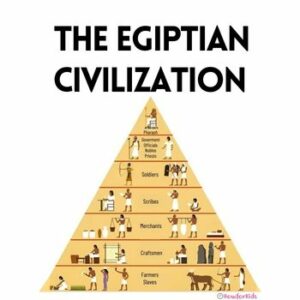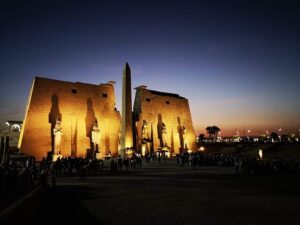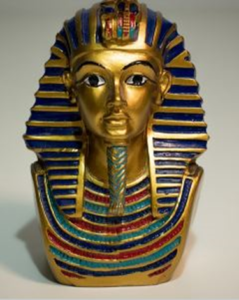Egyptian Pharaohs: The Life of the Pharaoh for Kids
Table of Contents
The pharaohs were the kings of ancient Egypt. Some were women, but most of the pharaohs were men. The pharaohs were the leaders of government and religion. There were about 170 different pharaohs, one pharaoh at a time. Egyptian Pharaohs: The Life of the Pharaoh.
Pharaohs of Ancient Egypt
If you search Ancient Egypt on the internet, you will find pharaohs known as living gods, or as an intermediary between mortal man and the gods, and other god-related positions. During the Old Kingdom, the pharaohs believed themselves to be living gods. But they were deadly.
During the Middle Kingdom, the pharaohs no longer believed themselves to be living gods, but rather representatives of the gods on earth. The Pharaoh, for the people of Egypt, was simply Pharaoh, King of Egypt and High Priest of all the temples. The power of him was absolute and overwhelming. He was not worshiped. He was obeyed.
Ancient Egypt’s Social Structure

The organization of Egyptian society can be represented by a pyramid at the top of which was the pharaoh, considered as a god, son of the sun who should be obeyed and worshiped. All authority came from him: he was the supreme judge, head of the army, and, as owner of the entire territory, the economy also depended on him. His powers were to be renewed every thirty years.
The priests would occupy the place immediately below, as guardians of the temples they disposed of their riches, which included numerous lands with their consequent peasants to cultivate them.
Next were the administration officials, among whom the scribes, the military leaders and the nomarchs stood out, that is, all those groups that were very close to the pharaoh.
The lower steps were occupied by artisans and peasants. They were free men forced to pay tribute to the pharaoh, either in kind (deliver part of the harvest) or in labor (participate in the construction of public works). Most of the peasants were the fellahs who cultivated the lands owned by the pharaoh or the temple. In theory they were free men, but in practice they were subject to the will of the owners of the land.
Finally the slaves, who had reached this condition by being prisoners of war.
The ancient Egyptians believed that all the wealth of Egypt and the world belonged to the Pharaoh. Every house, brick, stone, animal, amulet, jewel, statue, man, woman, child, clothing, temple, warehouse, tomb, egg found along the Nile, everything, absolutely everything, belonged to the Pharaoh. In exchange for everything the Pharaoh owned and controlled, the Pharaoh was responsible for the Ma’at – the health and happiness of Ancient Egypt. If Pharaoh did not do his work, the Nile would not rise and would not leave water for the plants. If the people did not obey Pharaoh, the Nile would not rise.

What is a Vizier in Ancient Egypt?
In the first centuries of ancient Egypt, people could speak directly with the pharaoh. As time passed, and the population grew and expanded, Egyptian kings began to rely on their viziers to speak to the people for them. The vizier was the highest rank of the government next to the Pharaoh. They were powerful ministers who bore the full burden of government: Rich and feared.
In addition, the Pharaoh had many advisers and many government officials who helped him rule the country. The first to the last of the councilors had to deliver a written report (by a scribe), or spoken, every day to the official above or superior to him. These officials handed it over to those above and so on so that all the reports reached the vizier.
Each day, the vizier reported to the pharaoh everything the vizier had done, including all the decisions he had made should Pharaoh wish to make any changes, and a summary of all the reports the vizier had received that day from all Egyptian officers. It was a very amazing system of government. And it worked for more than 3000 years!
Pharaoh’s Symbols of Power: Crook and Flail

In honor of the god Osiris, the kings (pharaohs) of Egypt carried with them a staff and a flail, symbols of Osiris. The crook especially became the symbol of the rulers. The staff resembled a large snake and was made of wood. The ancient Egyptians used wood because wood was scarce. That made it even more special.
When Howard Carter discovered King Tut’s tomb, he found a crook and flail, along with other treasures. Only pharaohs and gods could wear these symbols of power. Carter learned from this discovery that he had found the tomb of a pharaoh!
Pharaoh: Lord of the Two LandsLord of the Two Lands
The person with the most power in ancient Egypt was the Pharaoh because he was the political and religious leader of the Egyptians with the titles: “Lord of the Two Lands” and “High Priest of All Temples”.
As a ruler, he dictated the laws, having to keep the maat (harmony and order), keeping the lands of Egypt united. That is why he was called “Lord of the Two Lands” (Upper and Lower Egypt). All the land was his, he created laws, collected taxes and defended the Egyptians from foreigners.
As “High Priest of All Temples”, the Pharaoh represented the gods on earth. He created rituals and temples to honor the gods.
Many pharaohs went to war when their lands were threatened or when they wanted to control foreign lands. If the Pharaoh won the battle, the conquered people had to recognize the Egyptian Pharaoh as their ruler and offer him the best and most valuable goods from his land.
Pharaoh’s Palaces

Pharaoh’s palace refers to a complex of main and external buildings. The temples were built with stone. But the palaces were built with mud and sun-dried bricks.
Palace robberies were very rare. This is because the guards and the activity of the palace was constant. (Temples, on the other hand, were looted for valuable possessions and sometimes the stones with which they were built were stolen.) The palace was not a fortress, it was just a complex, a house.
The palace was a very busy place. Some parts of the palace could be connected to a bridge. But people were walking around. They had many stores. Also houses and gardens. Each palace had a window through which the Pharaoh would appear for ceremonies and awards, to welcome foreign visitors. People referred to Pharaoh not as “the” Pharaoh, but simply Pharaoh. There was only one Pharaoh at a time and, in Ancient Egypt, one Pharaoh’s palace at a time. When a new Pharaoh was in power, a new palace might or might not be built. It depended on the Pharaoh. Everything in Ancient Egypt automatically belonged to the pharaoh. Therefore, he decided where the new pharaoh wanted to establish his main house.
As the head of the army, the pharaohs were trained as warriors and led the Egyptian army in battle. He learned to handle weapons as a child. He practiced archery on lion hunts in the desert.
The Queen
A pharaoh could have several wives, but only one was the one who reigned with him. Thus the queen receives the name of “Great Wife”. Sometimes they married her own sister to strengthen their access to the throne, imitating the gods who also married between brothers. The succession of the pharaohs generally came from father to son.
Famous Pharaohs: The Most Famous Rulers of Egypt
There were many pharaohs throughout the history of ancient Egypt. Here are some of the most famous:
Akhenaten

He is known to be the heretical pharaoh due to the religious reform he carried out basing the cult on the god Aten, the sun god.
He came to the throne when he was just 18 years old. He was married to the beautiful Nefertiti. After five years of reign, he decided to change the established order and impose a new religion. The new cult focused on the superiority of the god Aten over the other Egyptian gods, that is, a religion with a monotheistic base. The pharaoh himself would be the intermediary of the god.
He ordered to close the temples of the other gods, confiscate all their properties and destroy all the symbols that were related to the rest of the gods, especially with the god Amun-Ra. Thus the pharaoh could recover the power lost at the hands of the priests of this god.
Tutankhamun
Tutankhamun is mainly famous because most of his tomb remains intact and we have some of the greatest Egyptian treasures from his reign. He became pharaoh at the age of 9. He tried to bring back the gods that Akhenaten had made disappear. For a long time it was assumed that Akhenaten died without leaving any sons, which is why his sons-in-law succeeded him: first, Semenkera, and after his short reign, Tutankhamun. Recent research based on DNA examination suggests that Tutankhamun was the son of Akhenaten himself, though not his wife Nefertiti. Until Akhenaten’s death, Tutankhamun bore the name Tutankhaton, in honor of the sun god Aten.

Hatshepsut
Female pharaoh, Hatshepsut was at first the ruler of her son, but she took the power of pharaoh. She would dress like the pharaoh to reinforce her power, including the ceremonial crown and beard. She was considered by many to be not only the greatest female pharaoh but one of the greatest pharaohs in Egyptian history.

Amenhotep III
Amenhotep III became pharaoh when he was only 12 years old. He maintained his empire through a mix of diplomacy, royal marriages, and cunning. He undertook a large building program, including ports, canals and his great mortuary temple at Thebes – the largest in Egypt. He was the first pharaoh to send out royal bulletins, carved on stone plates. He was a lover of art and antiques. Furthermore, he was a skilled politician. He ruled for 39 years of great prosperity.

Ramses II
Also called Ramses the Great, he ruled Egypt for 67 years. He is famous today because of all the pharaohs he built the most statues and monuments.

Cleopatra VII

She normally considered herself the last pharaoh of Egypt. She kept the power by making alliances with famous Romans like Julius Caesar or Mark Anthony.
Learn about Writing in Ancient Egypt: Hieroglyphs
Curious Facts about the Pharaohs
• Pepi II became pharaoh at the age of 6. He ruled Egypt for 94 years.
• The pharaohs wore a crown with an image of the cobra goddess. Only the pharaoh could wear the cobra goddess. It was said that he would protect them by spitting flames at their enemies.
• The pharaohs built their own tombs so they could live well after death.
• The first pharaoh was a king named Menes who united Upper and Lower Egypt into one country.
• Khufu is the pharaoh who built the largest pyramid.

Located very close to Cairo, the Egyptian city of Giza (also known as Giza or Gizeh) is home to the necropolis of the ancient city of Memphis. There are the three famous pyramids of Cheops, Kefren and Menkaure. The pyramids of Egypt were funerary monuments that the pharaohs or emperors had built in their honor. Most of them were cenotaphs, that is, empty tombs. The great pyramids such as those of Cheops, Kefren and Menkaure took the name of the pharaoh to whom they were consecrated
The Grand Egyptian Museum: They assure that it will become the largest museum on the planet with more than 100,000 pieces of Egyptian civilization, in 480,000 square meters it will be inaugurated at the end of January 2023. It is highly anticipated by millions of tourists who visit the land of Egypt to learn about its impressive cultural and architectural heritage.